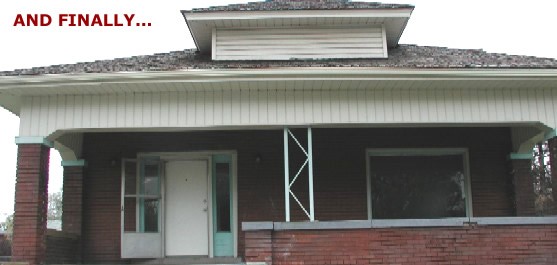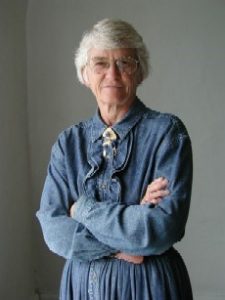
As University Neighborhood Partners enters its 15th year, we’re doing a lot of reflecting on what has happened over that time. We came across an article from the winter 2002 issue of Continuum magazine. In the article, reproduced below, UNP’s former director Irene Fisher wrote about how it all started.


Vol. 12. No. 3 Winter 2002
UNIVERSITY/NEIGHBORHOOD PARTNERS
by Irene Fisher
Rosanita Cespedes BS’74 MS’76 MS’78 PhD’81 said it best.
“You know how they talk about the glass ceiling that keeps women in business from advancing? Well, it’s just like that here,” she said. “I think there is a glass wall down State Street, and it’s in people’s heads—on both sides. We need to get rid of that wall.”
I’ve seen signs of that wall for many years, as I suspect most of us have. I’ve touched it more fully this year. It’s real. And it diminishes us all. I’ve spent this past year planning for University/Neighborhood Partners, a new program that will enable the University of Utah to engage more fully with groups and individuals in Salt Lake City’s west-side neighborhoods: Rose Park, Glendale, Fairpark, Poplar Grove, Westpointe, Rio Grande, People’s Freeway, Jordan Meadows. Almost three-quarters of my planning time has involved listening—listening to diverse voices from the campus and the neighborhoods. It’s been a rare privilege for me, and a profound learning experience.
I talked to 121 University representatives—deans, vice presidents, faculty, students, staff. They overwhelmingly express the hope that this new partnership, along with existing programs, can help achieve a more racially and ethnically diverse student body at the University of Utah. A second hope is that this partnership might help attract diverse faculty who want their academic work to relate to their communities.
I talked to nearly 243 people who live and work in Salt Lake’s west-side neighborhoods. And I’ve met extensively with a lively group of residents who have agreed to help introduce their neighborhoods to University “newcomers” as this partnership evolves. These 10 “Community Ambassadors” have identified the most valuable assets of their neighborhoods. At the top of that list is their diversity, which they believe increases their cultural awareness.
A campus and a community just 15 to 20 minutes apart. One hoping to increase diversity; one celebrating its rich diversity. And yet, an apparent disconnect.
Perhaps that disconnect relates to the four broad areas that residents hope the University/Neighborhood Partners will address: strengthening educational opportunities for youth; bridge-building across race, religion, geography, and culture; support for resident-led initiatives; and neighborhood capacity-building in the areas of health, housing, employment, safety, and environment.
The Partners’ Board of Advisers, co-chaired by Maria Garciaz BA’81, director of Neighborhood Housing Services and a Rose Park resident, and Scott Matheson, dean of the College of Law, held its first meeting in October. An Education and Youth Success (YES) Working Group—composed of campus representatives with expertise in public education and child and youth development, Salt Lake School District and local school representatives, and parents—will work from November 2002 to August 2003 to identify short- and long-term goals in its work to strengthen opportunities for youth. The Partners’ small pilot programs already in progress will continue, connecting the University with Backman and Edison Elementary Schools and Horizonte Learning Center.
During my year of consultation, I heard, loud and clear, that if the University wants to be taken seriously, we need to have a physical presence in the neighborhoods with whom we’re partnering. To make that possible, Salt Lake City leased a house to the University near Jordan Park (1060 South 900 West) for 10 years at no cost. We’ve also received support from Intermountain Health Care, which is providing the funds to remodel the house.
University/Neighborhood Partners will be formally initiated in January 2003 at this home base. When the remodel is complete, the facility will be available to the community and to campus partners for youth activities, meetings, classes, and other uses related to the Partners’ work. The Bend-in-the-River Partners, a pre-existing Bennion Center/community program, will house an environmental library and tool storage area in the building.
The University has already been involved in west-side neighborhoods through programs such as the English department’s Family Literacy Center at West High School, the Museum of Natural History’s Youth Teaching Youth Program focused on Glendale Middle School, the Department of Exercise and Sports Science’s National Youth Sports Program, and the Graduate School of Social Work’s clinical placements, internships, and health programs. These programs can all serve as models of the types of collaboration that are possible when groups come together for shared purposes.
What about that wall?
Rosanita is right. It needs to go. The University/Neighborhood Partners hope to contribute to that effort now and in the future.
—Irene Fisher, former director of the Bennion Center, is special assistant to the president for campus community projects.
Original archived article can be found at the following address:
https://continuum.utah.edu/back_issues/winter02/andfinally.htm
